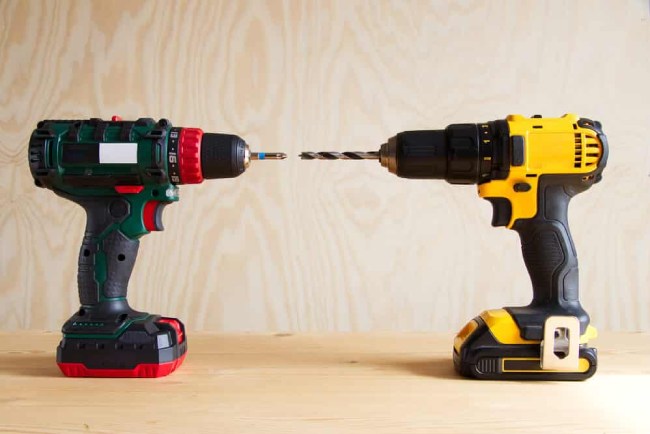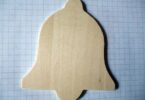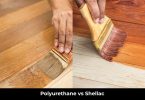Can you use an impact driver as a drill?
Yes, it’s possible to use your impact driver for drilling wood, plastic, brick, stone, or even harder materials like iron and steel as long as the collet of your driver can hold the right drill bit.
Regular drills and cordless impact drivers are both rotary power tools. They bear a considerable resemblance in their main mechanism, characteristics, and design.
Drills have a steady spinning while impact drivers are for driving screws and they usually respond with a short gust of force when you press the trigger.
Both these tools are extremely popular and most commonly used. Part of the reason behind this popularity comes down to their versatility.
Why the impact driver will be your favorite drilling tool

-
Efficient rotational force
Most impact drivers have quick-release hex chucks in contrast with adjustable keyless chucks of power drills. Their higher rotating force allows you to penetrate through the tougher workpieces without any difficulty.
-
No kick-back
Impact drivers give you zero kickback as the bits don’t come out of the slots. The impact mechanism pushes the bit into the material; which makes it more comfortable for you.
-
Less noise
More torque and better control of impact drivers make the drilling less bumpy and get the bits to go straight in. Fewer bumps mean lesser noise.
3 things to know when drilling with an impact driver
An everyday impact driver is no match for a good standard drill for making holes into materials.
A regular drill should be your first pick although an impact driver can make an acceptable substitute when you’re in a pinch.
1. You need a hex shank drill bit

First and foremost, the drill bit needs to have a hexagonal shaped shank so your driver’s collet can hold it perfectly.
More than 90% of impact drivers have a hexagonal-shaped socket and ordinary plain-shank drill bits don’t work with them.
The benefit of hex-shaft bits is that they don’t slip in the course of the operation and get damaged.
On the downside, they’re hard to find in the market and limited in size. Consider yourself lucky if you can get the size you need.
2. Impact-rated drill bits

Get the impact bits that are specifically designed to work with drivers. You should have a full range of bits for the specific type of drilling you want to accomplish.
Bits that are not designed for drivers might bend under the increased amount of impact force. Ordinary drill bits might crack and burst while you operate in a worst-case scenario.
Use impact-rated bits to drill holes with an impact driver and be safe.
3. No clutch & limited speed options
You will be restricted on the speed options as you try drilling with the impact driver. It might take you much longer to finish off the task compared to using a regular drill.
Above and beyond, You’ll not get a clutch option like most drills in your impact driver. Not having a clutch is a disappointment for drilling jobs. But the driver without a clutch is seemingly shorter, which will make it easy to operate in tight places.
Some impact drivers do have clutches. They’re overly pricey and lack the benefit of being shorter.
How Do You Put a Drill Bit in an Impact Driver?

Unlike the chuck with jaws on the drills, impact drivers have the locking, quick-change collet that can only hold typical hex shank drivers and bits. It takes a few seconds to put a drill bit in an impact driver.
Here are the steps to follow –
- Grab the collet with your fingers and push it forward
- Drop the hex shank drill bit in
- Release the collet immediately and you should be good to go
All impact drivers have the quick-change feature. The idea is the same with most brands, the collet should pop out and your bit should come out.
Benefits of drilling with an impact driver
-
Better torque
Impact drivers may not be the impeccable hole makers but they have their advantages. Most drivers tend to have a satisfactory torque to get the drilling operations done, reaching 205 Nm at max.
They can generally deliver between 1500 and 1800 in-lbs of rotational force and put more emphasis on increased RPM.
What this means is that they’ll do 95% of the work quicker than a standard drill with more torque and slower speeds. So, when you need to reach for socket adapters, you’ll be better off grabbing an impact driver.
-
Compact design
The compatibility is possibly the best advantage of impact drivers. They can outwork most standard drills when you need to drill holes in skin-tight spaces.
Also, they’re more comfortable and well-balanced in hands.
-
Easy on your wrist
Drilling with impact drivers will feel like a smooth vibration in your hand as the constant impact mechanism makes it free from kickback.
These machines push the bits forward in a consistent motion, so your hands are saved from any extra strain. You need to push a little harder when drilling through masonry or metallic materials.
-
Less switching
Impact drivers are rather versatile tools as you can use them for both screwing and drilling holes. This way, you don’t need to switch between tools very often. You can perform both tasks using a single device.
-
Lightweight
Along with the compact design, they’re lighter and easier to control when compared to some typical drills. You can get more work done while putting less strain on your arms.
-
Quick-release facility
The quick-release system of the impact drivers allows you to change the bits faster. It is much quicker than the self-centering chuck on cordless drills. This ability will help speed up your efficiency of work.
You get to prepare for several jobs having the necessary bits at hand because you can switch them as you need without having to slow down.
Drawbacks
-
Not suitable for precision holes
The biggest drawback is that you may not be able to make a precise hole with an impact driver due to its impact mechanism. Sure, you can make a hole when in a pinch.
-
Hexagonal shank drill bits do not fit well in the hex socket
You may find it hard to fit some of the drill bits in your driver’s collet. Sometimes it causes the drill to totter and wobble. In a situation like this, it’s best to drill a pilot hole on the mark before drilling the type of hole you need.
Get your bits from the same brand as the driver because it’ll eliminate the risk to a large extent.
-
Lack of availability of bits to the size
Although some brands have become aware of people using their models to drill holes lately and have begun to manufacture hex bits to fit those particular models, there is still a chance that you might not find the right bits to the right size.
-
Limited speed
Basic impact drivers come with limited speed. You need to press the on/off switch consistently as they lack multiple driving speeds and modes. This keeps you from making precise holes. Besides, they’re not appropriate for drilling into solid materials such as brick or concrete.
FAQs
1. Is an impact driver the same as a power drill?
Ans: They’re almost the same. Impact drivers have better torque than power drills and hammering mechanisms. Impact drivers are no match for power drills when it comes to drilling holes as they have a more steady rotational force compared to drivers. But you can also drill holes with an impact driver using a hex shank bit in case you’re at a pinch.
2. Can I use an impact driver to remove lug nuts?
Ans: Yes, you can! Impact drivers are powerful enough to remove even the most stubborn lug nuts. But you need to use a hex square drive adapter and empath socket that perfectly match the nuts’ size.
3. Can you drill masonry with an impact driver?
Ans: Yes. You can drill through masonry or concrete with an impact driver but make sure the holes are not more than ¼ inch. A regular drill would be ideal for this job.








